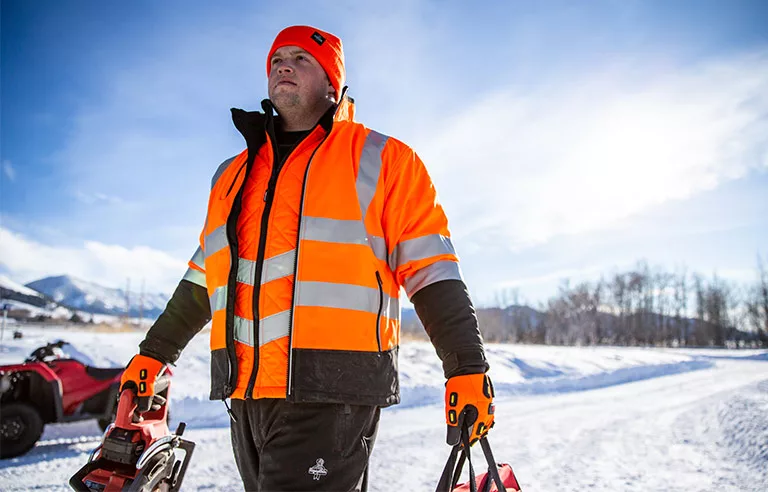What should safety professionals consider when building a cold-weather layering system that balances warmth, moisture management and mobility?

Responding is Leigh Stadelmeier, authorized OSHA outreach trainer and vice president of B2B outdoor sales, Refrigiwear, Dahlonega, GA.
When workers are exposed to wind, rain, snow, sleet and freezing temperatures, having the right layers of insulated workwear makes the difference between getting the job done and getting frostbite. Safety managers should follow six steps to build a layered system of warmth.
1. Start with a moisture-wicking base layer
Because sweating lowers body temperature, it’s imperative to evaporate sweat from the skin with blended or synthetic base layers that are light, stretchy and breathable. Properly fitting base layers should be snug, but not compressive.
2. Protect the core with flexible mid-layers
The mid-layer sandwiches warm air between the base and outer layers. Choose thermal sweatshirts, insulated vests or lightweight quilted jackets for maximum comfort. Crews can remove mid-layers during periods of heavy exertion to prevent overheating, then put them back on when activity slows or temperatures drop. This adaptability allows workers to regulate body temperature without compromising comfort or safety.
3. Stay dry with weather-ready outer layers
Look for insulated work jackets, snow bibs or coveralls made with windproof and waterproof or water-repellent materials, such as coated polyester or polyester with an inner waterproof membrane.
Select insulated outer layers based on the density of insulation they contain, usually expressed as “g” (grams) or “gsm” (grams per square meter). Garments with higher insulation density will feel warmer than garments with lower density insulation.
To balance warmth with moisture management and range of motion, look for accordion-stretch panels at shoulders, elbows, waist and knees, as well as vent flaps or armpit zippers to release excess heat from the core.
4. Shield feet from frozen surfaces
Outfit crews in waterproof insulated boots with ASTM composite safety toes, rather than steel or aluminum toes that make feet feel colder. Look for cushioned, moisture-wicking insoles to prevent fatigue and moisture buildup.
Guard against frostbite and trench foot with moisture-wicking thermal socks made from hollow synthetic fibers or wool blended with synthetic materials. Keep an extra pair of dry socks on hand to change out whenever socks get too sweaty. In extreme cold, workers may even need air-activated toe warmers or heated insoles to avoid cold-related injury to the feet.
5. Protect hands without compromising dexterity
For maximum dexterity, look for individually sewn fingers and accordion-stretch panels across the knuckles. Pre-curved, ergonomic gloves increase grip strength while preventing hand fatigue. Abrasion-resistant materials and impact pads add extra protection. In extreme cold, workers may also need a moisture-wicking knit glove liner or air-activated hand warmers to support blood flow and flexibility in their fingers.
6. Cover the head, neck and ears
Crews that need safety helmets or hard hats should be outfitted in thermal balaclavas with specially placed slits to fit around the safety gear while keeping the head, ears, nose and neck covered. Workers who don’t require a safety helmet may feel more comfortable pairing an insulated beanie with a neck gaiter to protect vulnerable areas around the ears and neck without fully covering the face.
By applying these principles – moisture wicking in the base layer; flexibility in the mid- and outer layers; and full coverage for the feet, hands and face – safety pros can build cold-weather systems that protect without sacrificing productivity.
McCraren Compliance offers many opportunities in safety training to help circumvent accidents. Please take a moment to visit our calendar of classes to see what we can do to help your safety measures from training to consulting.
Original article published by Safety+Health an NSC publication